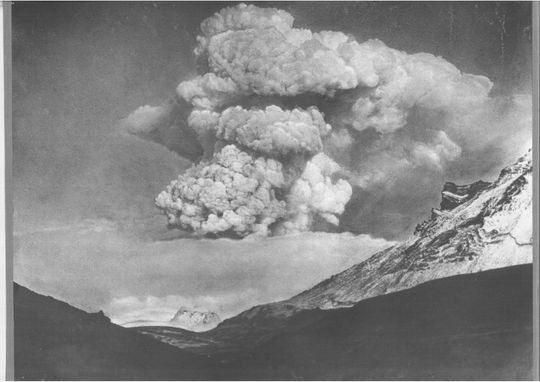Katla eruptions
Katla eruptions
The Katla volcanic system is one of many Icelandic volcanic systems that is partly ice covered. The central volcano, also called Katla, is located under the Mýrdalsjökull ice-cap but its ice-thickness goes up to 700 m. The associated fissure swarm reaches ~70 km NE towards Vatnajökull. The Katla volcanic system is the fourth most active system in Iceland and has erupted at least 21 times during the last 1100 years. During historical time, the average repose period between eruptions has been ~50 years. However, in 2018 there will be 100 years since the last eruption broke through the ice cover.
Characteristic activity in Katla is explosive basaltic eruptions that spew tephra over the nearby areas, how far depends on the size of the eruption. Silicic eruptions also occur, as well as effusive basaltic eruptions. Although the effusive basaltic eruptions are the least common they are the largest ones known to have taken place in the Katla volcanic system. The latest eruption of that sort was the large Eldgjá fissure eruption that started ~939 CE and produced ~20 km3 of lava and tephra. Large jökulhlaups or glacial outbursts are often associated with Katla eruptions as the magma melts the glacier ice. Before the Eldgjá eruptions these floods were known to travel west of the Mýrdalsjökull glacier but all floods after The Eldgjá event have gone down to the flood plains SE of the Mýrdalsjökull ice-cap.
For more information on the Katla volcanic system, visit the Catalogue of Icelandic volcanoes.

Photo: Kjartan Guðmundsson, 1918.



